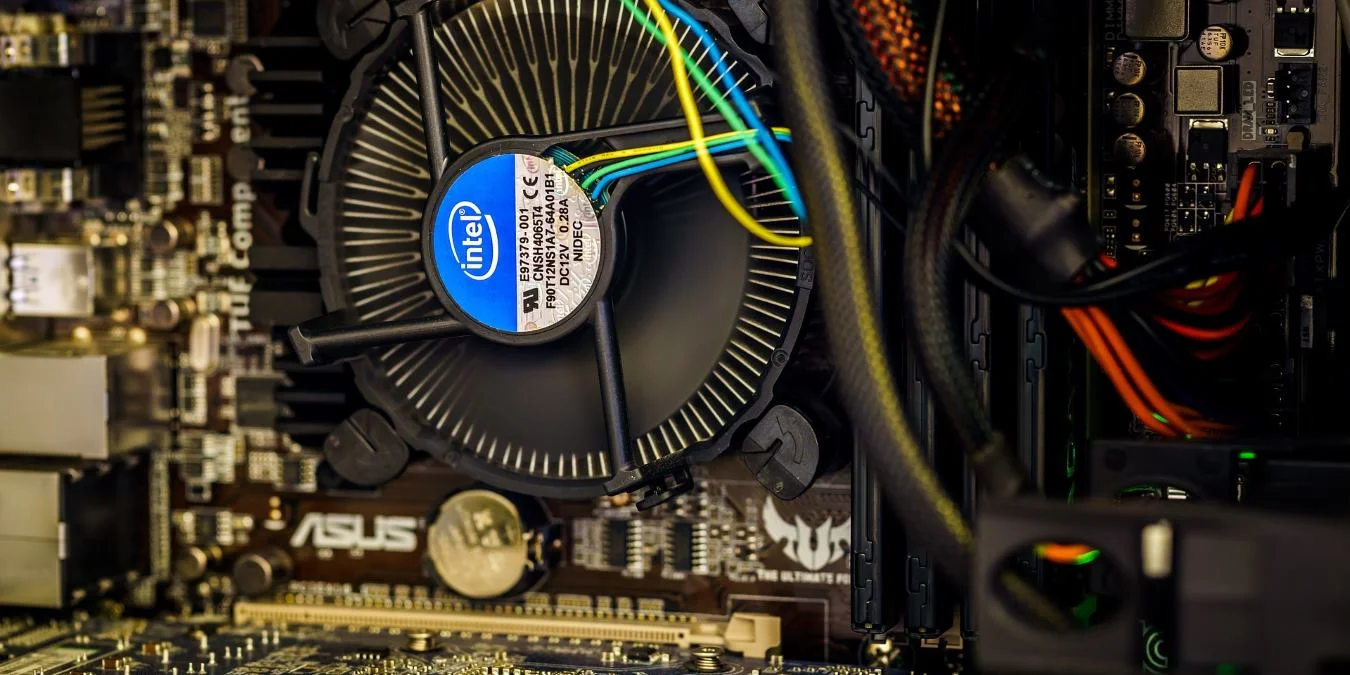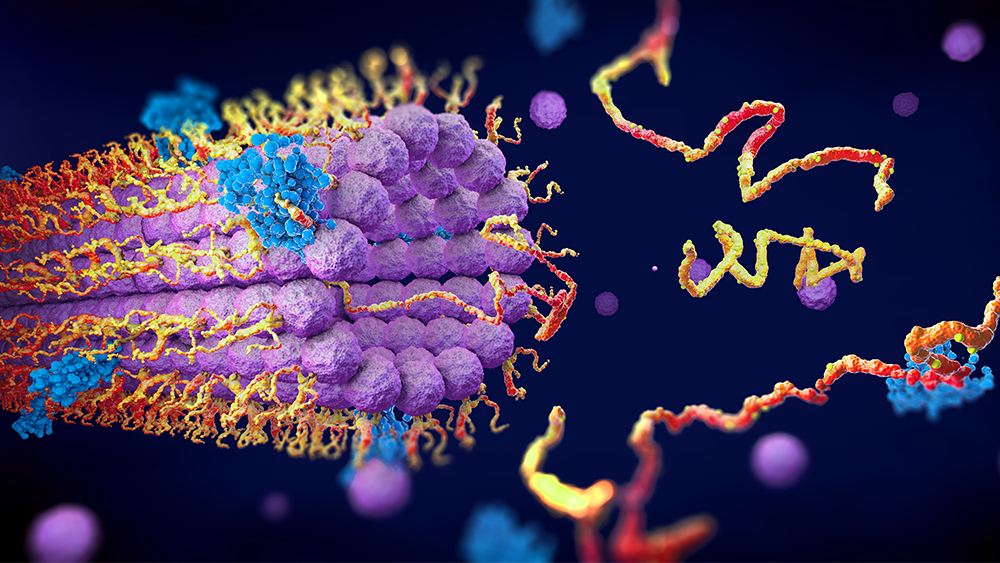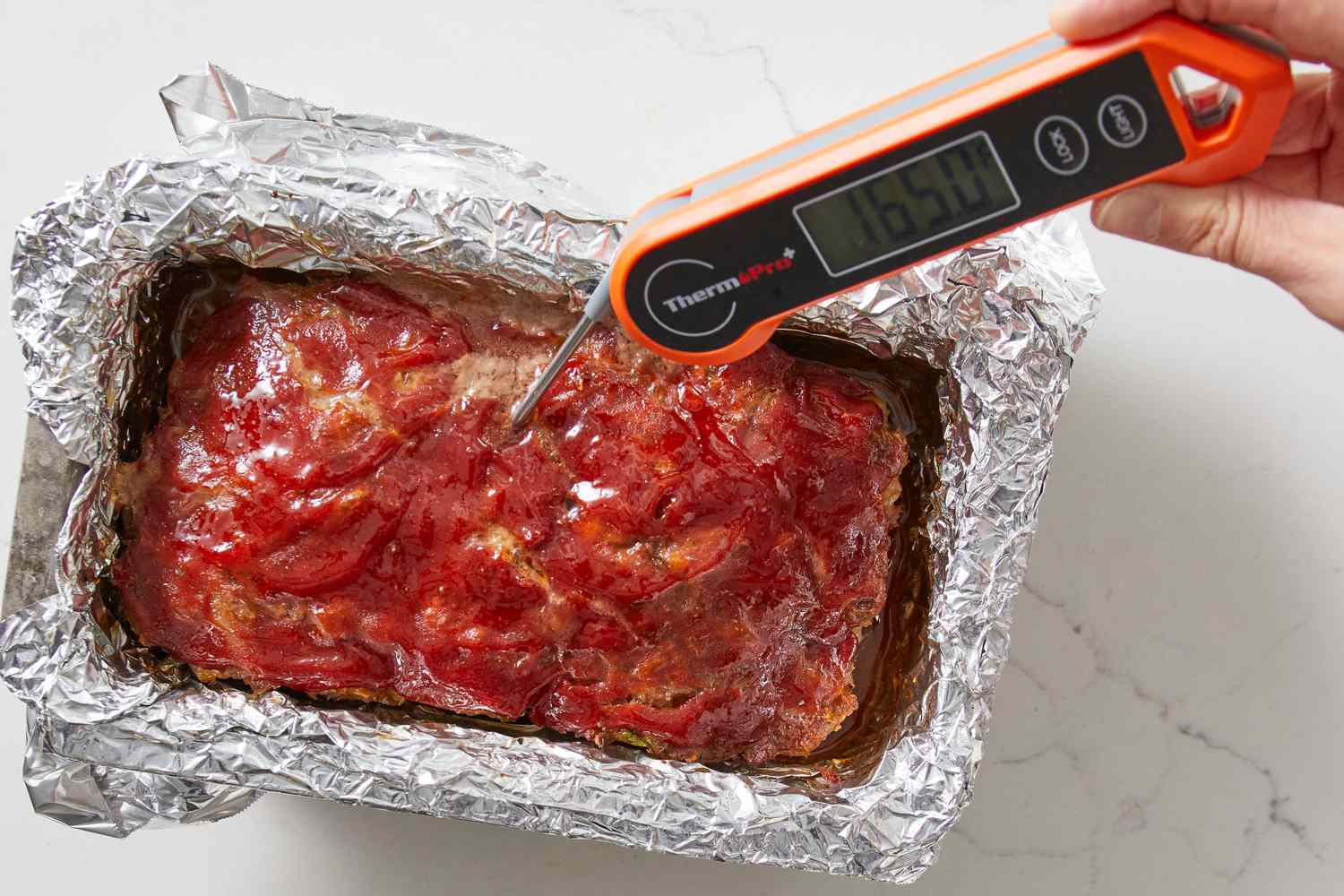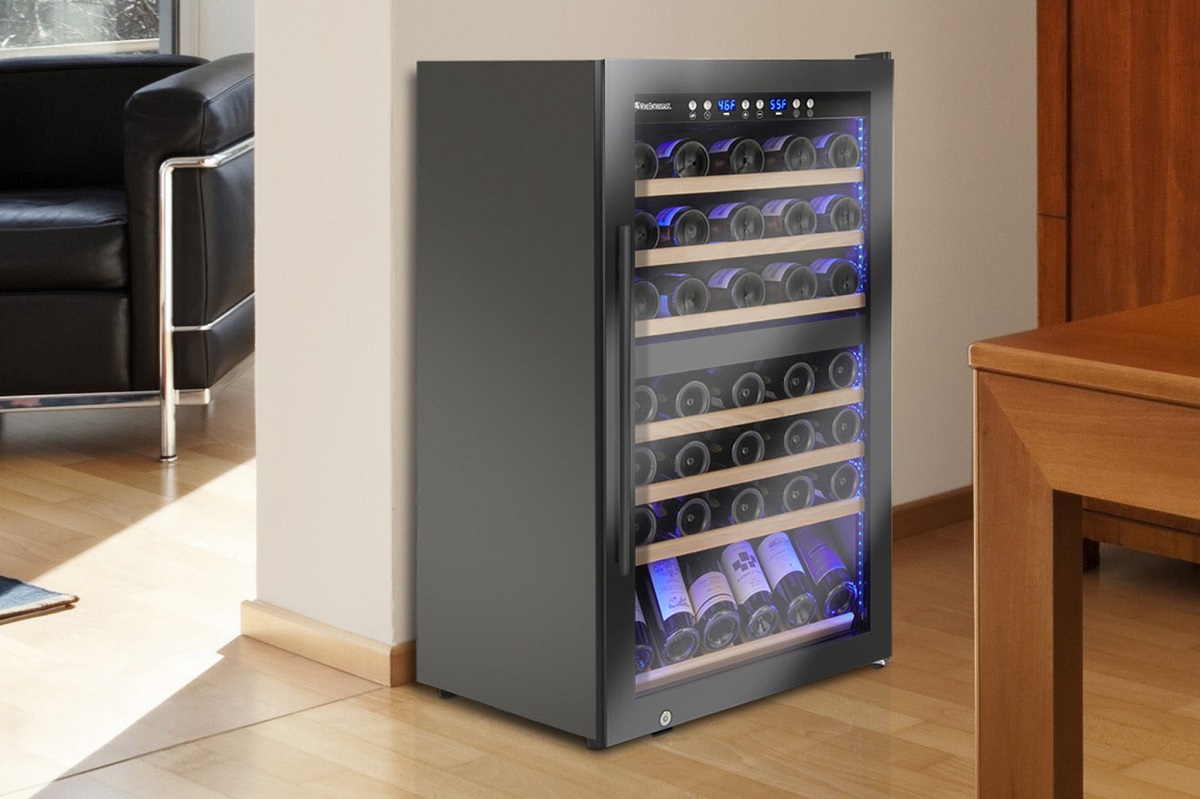Home>Technology & Engineering>Optimizing CPU Temperature: Tips And Tricks For Better Performance


Technology & Engineering
Optimizing CPU Temperature: Tips And Tricks For Better Performance
Published: March 1, 2024
Learn how to optimize CPU temperature for better performance with our expert tips and tricks. Explore the latest technology and engineering solutions to keep your system running smoothly.
(Many of the links in this article redirect to a specific reviewed product. Your purchase of these products through affiliate links helps to generate commission for Temperatures.com, at no extra cost. Learn more)
Table of Contents
Understanding CPU Temperature
The CPU, or central processing unit, serves as the brain of a computer, executing instructions and performing calculations essential for the system's operation. As it carries out these tasks, the CPU generates heat due to the electrical resistance within its circuits. This heat can elevate the CPU's temperature, potentially leading to performance issues and long-term damage if not managed effectively.
Understanding CPU temperature is crucial for maintaining the stability and longevity of a computer system. The temperature of a CPU is measured in degrees Celsius (°C) and is a key indicator of its operational health. When a CPU operates within its optimal temperature range, typically between 45°C and 70°C, it functions efficiently and reliably. However, if the temperature exceeds this range, it can trigger thermal throttling, a protective mechanism that reduces the CPU's performance to prevent overheating.
The ideal operating temperature for a CPU varies depending on its model and specifications. High-performance CPUs designed for gaming or intensive tasks may have a higher thermal threshold, while low-power CPUs in mobile devices aim for lower temperatures to conserve energy and enhance battery life.
To gauge the CPU temperature, specialized software or hardware monitoring tools can be utilized. These tools provide real-time temperature readings, allowing users to assess the CPU's thermal performance and make informed decisions regarding cooling solutions and system optimization.
In essence, understanding CPU temperature involves recognizing the delicate balance between heat generation and dissipation within the CPU. By comprehending the factors influencing CPU temperature, such as workload intensity, ambient temperature, and cooling efficiency, users can take proactive measures to maintain an optimal thermal environment for their computer systems.
Importance of Optimizing CPU Temperature
Optimizing CPU temperature is paramount for ensuring the reliable and efficient operation of a computer system. The significance of maintaining an optimal CPU temperature extends beyond mere performance enhancements; it directly impacts the longevity and stability of the hardware. By prioritizing the optimization of CPU temperature, users can unlock a myriad of benefits that contribute to the overall health and functionality of their systems.
1. Enhanced Performance
A well-regulated CPU temperature is synonymous with enhanced performance. When a CPU operates within its recommended temperature range, it can maintain its maximum clock speeds and processing capabilities. Conversely, elevated temperatures can trigger thermal throttling, causing the CPU to reduce its performance to mitigate heat buildup. By optimizing CPU temperature, users can unleash the full potential of their CPUs, resulting in smoother multitasking, faster program execution, and improved overall system responsiveness.
2. Longevity of Hardware
Excessive heat can accelerate the degradation of electronic components, potentially shortening the lifespan of the CPU and other critical hardware. By optimizing CPU temperature, users can mitigate the detrimental effects of prolonged exposure to high temperatures, thereby prolonging the longevity of their computer systems. This proactive approach to temperature management can contribute to cost savings by reducing the frequency of hardware replacements and upgrades.
3. Stability and Reliability
A well-maintained CPU temperature fosters system stability and reliability. Fluctuating temperatures or prolonged exposure to high heat levels can lead to system instability, unexpected shutdowns, and even permanent damage to the CPU. By optimizing CPU temperature, users can minimize the risk of system crashes and hardware failures, ensuring a consistent and dependable computing experience.
4. Energy Efficiency
Optimizing CPU temperature can also lead to improved energy efficiency. When a CPU operates at lower temperatures, it requires less power to maintain its functionality, resulting in reduced energy consumption and heat dissipation. This not only contributes to environmental sustainability but also translates to potential energy cost savings for users.
In essence, the importance of optimizing CPU temperature cannot be overstated. It is a fundamental aspect of responsible computer maintenance and directly influences the performance, longevity, stability, and energy efficiency of the system. By prioritizing temperature optimization through effective cooling solutions and proactive monitoring, users can safeguard their hardware investment and elevate their computing experience to new heights.
Monitoring CPU Temperature
Monitoring CPU temperature is a critical aspect of proactive system management, enabling users to gain valuable insights into the thermal behavior of their computer's central processing unit. By continuously monitoring the CPU temperature, users can make informed decisions regarding cooling solutions, workload management, and system optimization. This proactive approach to temperature monitoring empowers users to maintain an optimal thermal environment for their computer systems, thereby enhancing performance, longevity, and reliability.
Real-Time Temperature Readings
Specialized software and hardware monitoring tools provide real-time temperature readings, allowing users to closely track the thermal performance of their CPU. These tools present temperature data in a user-friendly interface, often displaying current temperatures, historical trends, and thermal load information. By leveraging these real-time temperature readings, users can promptly identify temperature spikes or sustained high temperatures, enabling them to take timely corrective actions to prevent potential performance degradation or hardware damage.
Thermal Threshold Alerts
Many monitoring tools offer the functionality to set thermal threshold alerts, notifying users when the CPU temperature exceeds predefined limits. These alerts serve as proactive warnings, prompting users to investigate the cause of temperature anomalies and implement necessary measures to mitigate heat buildup. By configuring thermal threshold alerts, users can preemptively address cooling inefficiencies, airflow obstructions, or excessive workload demands that may contribute to elevated CPU temperatures.
Historical Data Analysis
In addition to real-time temperature readings, monitoring tools often facilitate the analysis of historical temperature data. By reviewing historical temperature trends, users can identify patterns and correlations between CPU temperature fluctuations and specific system activities. This retrospective analysis can unveil insights into the impact of workload intensity, ambient temperature variations, and cooling system performance on the CPU's thermal behavior, empowering users to optimize their system configuration for improved temperature management.
Remote Monitoring Capabilities
For users managing multiple systems or seeking remote monitoring capabilities, some monitoring tools offer the convenience of remote access and alerts. This feature enables users to monitor CPU temperature across their networked devices from a centralized interface, facilitating comprehensive temperature management and proactive troubleshooting without the need for physical access to individual systems.
In essence, monitoring CPU temperature is a proactive and indispensable practice for maintaining the health and performance of computer systems. By leveraging real-time temperature readings, thermal threshold alerts, historical data analysis, and remote monitoring capabilities, users can gain valuable insights into their CPU's thermal behavior and take proactive measures to optimize temperature management. This proactive approach not only enhances system performance and reliability but also contributes to the longevity of critical hardware components, ultimately elevating the overall computing experience.
Tips for Lowering CPU Temperature
-
Effective Airflow Management: Ensuring proper airflow within the computer chassis is essential for dissipating heat generated by the CPU. Positioning case fans strategically to facilitate intake and exhaust airflow can significantly contribute to lowering the CPU temperature. Additionally, removing dust and debris that obstruct airflow pathways and impede heat dissipation is crucial for maintaining optimal thermal performance.
-
Quality Thermal Paste Application: When installing or reseating the CPU cooler, applying a high-quality thermal paste between the CPU heat spreader and the cooler base is imperative. Proper application of thermal paste ensures efficient heat transfer, minimizing thermal resistance and enhancing the overall cooling effectiveness.
-
Optimized Fan Configuration: Adjusting the fan configuration within the computer case can have a notable impact on CPU temperature. By fine-tuning fan speeds and profiles through the system's BIOS or dedicated fan control software, users can tailor the cooling performance to match the CPU's thermal demands, thereby lowering its operating temperature.
-
Utilization of Aftermarket CPU Coolers: Upgrading to a high-performance aftermarket CPU cooler can significantly improve thermal dissipation, especially for users engaging in demanding tasks such as gaming or content creation. Aftermarket coolers with larger heatsinks, enhanced heat pipes, and efficient fan designs offer superior cooling capabilities, effectively lowering the CPU temperature under heavy workloads.
-
Undervolting the CPU: Adjusting the CPU voltage through undervolting can reduce power consumption and heat generation without sacrificing performance. By carefully lowering the CPU voltage within safe limits, users can achieve a balance between energy efficiency and thermal management, resulting in a noticeable reduction in CPU temperature.
-
Optimal Power Management Settings: Configuring power management settings within the system's BIOS or operating system can contribute to lowering the CPU temperature. Enabling power-saving features and adjusting CPU power profiles can effectively reduce heat generation during idle or low-demand periods, promoting a cooler operating environment.
-
Enhanced Case Ventilation: Ensuring adequate ventilation within the computer case by utilizing perforated panels, cable management techniques, and strategic component placement can facilitate improved airflow and heat dissipation. Optimizing case ventilation is instrumental in maintaining lower CPU temperatures, especially in systems with high-performance hardware configurations.
-
Regular System Maintenance: Periodic cleaning and maintenance of the computer system, including the CPU cooler, case fans, and air intake/exhaust pathways, are essential for sustaining optimal thermal performance. Removing accumulated dust and ensuring unobstructed airflow pathways can prevent heat buildup and contribute to consistently lower CPU temperatures.
By implementing these tips for lowering CPU temperature, users can effectively manage thermal performance, enhance system stability, and prolong the longevity of their computer hardware. Prioritizing temperature optimization through proactive cooling solutions and system maintenance is key to unlocking the full potential of the CPU while ensuring a reliable and efficient computing experience.
Tricks for Better Performance
Optimizing CPU temperature is not only about managing heat but also about maximizing the performance potential of the central processing unit. By implementing specific tricks tailored to enhance performance, users can harness the full capabilities of their CPUs while maintaining optimal thermal conditions.
Overclocking with Caution
Overclocking, the practice of increasing a CPU's clock speed beyond its factory-set specifications, can yield significant performance gains. However, it requires meticulous attention to voltage, cooling, and stability. When done cautiously and within safe limits, overclocking can elevate the CPU's processing power, resulting in improved task execution and responsiveness.
Dynamic Frequency Scaling
Leveraging dynamic frequency scaling, a technology that adjusts the CPU's clock speed based on workload demands, can optimize performance and energy efficiency. By dynamically scaling the CPU frequency to match the required processing power, users can achieve a balance between performance and power consumption, ensuring efficient utilization of the CPU's capabilities.
Utilizing Multi-Core Processing
Modern CPUs often feature multiple cores, allowing for parallel processing of tasks. Effectively utilizing multi-core processing through optimized software and task distribution can significantly enhance system performance. By leveraging the inherent parallelism of multi-core CPUs, users can expedite complex computations and multitasking activities, resulting in a more responsive and efficient computing experience.
Advanced Cooling Solutions
Investing in advanced cooling solutions, such as liquid cooling systems or high-performance air coolers, can facilitate better thermal management and sustained high-performance operation. These cooling solutions offer superior heat dissipation capabilities, allowing the CPU to maintain lower temperatures even under heavy workloads, thereby preventing thermal throttling and ensuring consistent performance.
Read more: Optimal Temperature For Newborns: Tips For Maintaining A Safe And Comfortable Environment
Optimized System Configuration
Fine-tuning the system configuration, including memory timings, cache settings, and power delivery parameters, can yield performance improvements. By optimizing these parameters to align with the CPU's capabilities and workload characteristics, users can unlock additional processing power and responsiveness, enhancing overall system performance.
Software Optimization and Updates
Regularly optimizing software configurations and ensuring up-to-date system and driver software can contribute to better performance. Optimized software settings, driver enhancements, and firmware updates can address performance bottlenecks, improve compatibility, and introduce optimizations that leverage the CPU's capabilities more effectively.
By incorporating these tricks for better performance into their system management practices, users can elevate the overall performance of their CPUs while maintaining a conducive thermal environment. These strategies, when implemented with care and consideration for the system's capabilities, can unlock the full potential of the CPU, resulting in a more responsive, efficient, and capable computing experience.
Conclusion
In conclusion, optimizing CPU temperature is a fundamental aspect of responsible system management, with far-reaching implications for performance, longevity, and reliability. By understanding the impact of CPU temperature on system operation and leveraging effective monitoring tools, users can proactively manage thermal performance and safeguard the health of their computer hardware.
The importance of maintaining an optimal CPU temperature cannot be overstated. It directly influences the performance capabilities of the CPU, the longevity of critical hardware components, and the overall stability and reliability of the system. Through a combination of effective airflow management, quality thermal paste application, optimized fan configurations, and the utilization of aftermarket CPU coolers, users can lower CPU temperatures and enhance thermal performance.
Furthermore, implementing tricks for better performance, such as cautious overclocking, dynamic frequency scaling, and leveraging multi-core processing, allows users to maximize the capabilities of their CPUs while maintaining optimal thermal conditions. Advanced cooling solutions, optimized system configurations, and software optimizations further contribute to elevating system performance and responsiveness.
By prioritizing temperature optimization and performance enhancement, users can elevate their computing experience, unlock the full potential of their CPUs, and ensure a reliable and efficient system operation. The proactive approach to CPU temperature management not only enhances the user experience but also contributes to cost savings through prolonged hardware longevity and improved energy efficiency.
In essence, optimizing CPU temperature is a holistic endeavor that encompasses proactive monitoring, effective cooling solutions, and performance-enhancing strategies. By embracing these principles and integrating them into their system management practices, users can cultivate an environment where their CPUs operate at peak efficiency, ensuring a seamless and responsive computing experience for the long term.











